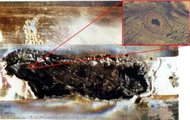Objective
Within this project, the susceptibility of Solar Arrays to Micrometeoroid impact is investigated. Besides the mechanical damage due to hypervelocity impacts, special emphasis is laid on the overall interaction with electrical effects, e.g. plasma generation, electrical discharges and arcing.

The project is being sposored by ESA (ESA contract 22462/09/NL/GLC) and performed at the Institute of Astronautics under subcontarct of Ernst Mach Institute, Freiburg.
Description
Besides being one of the most critical satellite components directly linked to mission success, solar arrays are the component most exposed to the space environment. The evolution of space solar arrays to higher power and voltage ranges involved several failures induced by environmental effects. It was discovered that an electrostatic discharge on a high-voltage solar array, pre-charged in the space plasma environment, can be sustained by the array itself, thus resulting in permanent short circuiting of strings. Another environmental effect to be considered in this context is the hypervelocity impact (HVI) of micrometeoroids and space debris. Sources of HVI induced failures are the mechanical damage leaving behind perforations and craters, and the formation of free charges at the impact location. There is evidence that this impact plasma may trigger arcing events and, thus, poses a more significant risk to solar arrays than the current regard given to HVI effects. This study shall investigate experimentally the susceptibility of Solar Arrays to hypervelocity impacts under realistic electrical conditions.